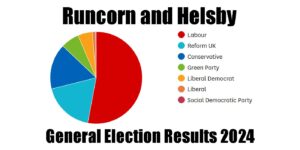Green Manifesto 2010 Climate Change
The canary in the mine
Miners used to take canaries down mines with them to check for poisonous gases. They were an advance warning of impending problems. That’s what climate change is today – a threat in itself to our survival as a species and a warning of more general ecological collapse.The evidence from Copenhagen suggests that mainstream governments just haven’t grasped the nature and scale of the changes that need to be made, from massive investments in energy saving, to green technologies and infrastructure, to transfers of funds to developing countries. Human-made climate change is an unprecedentedly serious threat to our welfare. But only the Green Party understands that this is just one sign of the stress our economies and lifestyles put on the environment. Other political parties will have you believe that it’s just an isolated problem. But it’s not. It’s a sign of what’s to come unless we get our planetary home in order.
We know that every person, every community, every country has a carbon footprint that contributes to climate change. And we know that those with big footprints – the wealthy and those with extravagant lifestyles – have to make them smaller.
But carbon isn’t the only footprint we have. We have water footprints, and other footprints too. Added together, these different footprints add up to our total ecological impact – and it mustn’t be bigger than the planet we live on. Today, though, the scale of economic activity has taken us dangerously beyond what the planet can bear if it is to continue to support flourishing human and other life, and population growth only makes things worse.
Why we need to reduce emissions by 10 per cent per year
The concentration of carbon dioxide (CO2) in the atmosphere has risen from 270 parts per million (ppm) CO2 in the 19th century to about 435ppm CO2 equivalent (that is, including other greenhouse gases like methane) today. The Government assume that we should aim in the long run to stabilise the greenhouse gases in the atmosphere at about 550ppm CO2 equivalent. Their target of an 80% reduction by 2050 (or about 2.5% per year) is based on that. But the Government’s own Stern Report (which summarises the scientific consensus) says that at that level of greenhouse gases there is a 75–99% chance (that is, near certainty) of global warming exceeding 2°C. If that happens there is a high chance of runaway and disastrous climate change. We in the Green Party think it is both imprudent and immoral knowingly to accept that level of risk. We think we should aim to stabilise the level of CO2 equivalent in the atmosphere at a level just slightly above the present level (i.e. around 450ppm). The scientists agree with us. To achieve 450ppm, global emissions need to drop by as much as 60% as soon as 2030. And industrialised countries with high emissions, like the UK, can both afford to, and need to, reduce their emissions rather faster: a 90% reduction by 2030. That means an annual reduction of about 10% per year from now until 2030.
That is why climate change is more than an isolated threat – it is a warning of the catastrophic social and environmental consequences of business as usual.
The failure of the Copenhagen Conference makes it more obvious than ever that finding a global solution to climate change is not just a technical and economic issue.The solution must also involve justice on a global scale, equity and interdependence. And it is an area where the UK should play a leading role in the EU and at international level to secure a fair, ambitious and binding deal.
That is why we support the Contraction and Convergence framework for mitigating climate change. Under such a system all countries would eventually converge on the same low emissions per capita. Rich countries would need to contract to that level quickly, while poorer countries would contract much more slowly to that level, or in a few cases expand to meet it. Under that scenario, and to avoid warming exceeding 2°C, the UK needs to adopt an initial annual carbon dioxide emissions reduction target of around 10 per cent, with the aim of reducing emissions by 90 per cent from 1990 levels by 2030, and 65 per cent by 2020 – starting now.
Green Manifesto 2010
Green Manifesto 2010 : Introduction
Green Manifesto 2010 : The Economy: Making it fair, making it work
Green Manifesto 2010 : Managing The Economy
Green Manifesto 2010 : Work And Jobs
Green Manifesto 2010 : Welfare
Green Manifesto 2010 : Taxation
Green Manifesto 2010 : Taxes to Protect The Enviroment
Green Manifesto 2010 : Local Living
Green Manifesto 2010 : Local Services
Green Manifesto 2010 : Housing
Green Manifesto 2010 : Education
Green Manifesto 2010 : Small Business
Green Manifesto 2010 : Citizens and Government
Green Manifesto 2010 : Policies For Citizenship
Green Manifesto 2010 : Government: It’s Ours
Green Manifesto 2010 : Climate Change
Green Manifesto 2010 : Transport
Green Manifesto 2010 : Farming, Food And Animal Protection
Green Manifesto 2010 : International Development, Peace and Security
Green Manifesto 2010 : Foreign Policy and Defence
Green Manifesto 2010 : Terrorism and the causes of terrorism
Green Manifesto 2010 : A positive role in Europe
Green Manifesto 2010 : Immigration
Green Manifesto 2010 : Trade, Aid and Debt
Copyright ©, The Green Party, 1a Waterlow Road, London N19 5NJ. All rights reserved. Any rights not expressly granted herein are reserved.














I am one of the man made climate change heretics, there is no doubt that the climate is changing, what we need to know is why. For decades i have seen science programmes telling me that the climate in Britain has changed numerous times, from ice ages to periods of warm rain forest type conditions, all this without a power station, areoplane or car existing on the planet. The climate is changing and there is nothing anybody can do about it.
I think this is driven by people who are employed and have vested intrests in making money out of it. Governments can raise taxes on it without anyone daring to object or they are denounced as gibbering heretics that should be burnt at the stake.
More emphasis should be put on re cycling the Earths finite resources instead of this manic obsession with CO2 emissions.
If climate change is so uppermost in peoples thinking why are there no posts on this site, i will tell you, its because man made climate change is crap